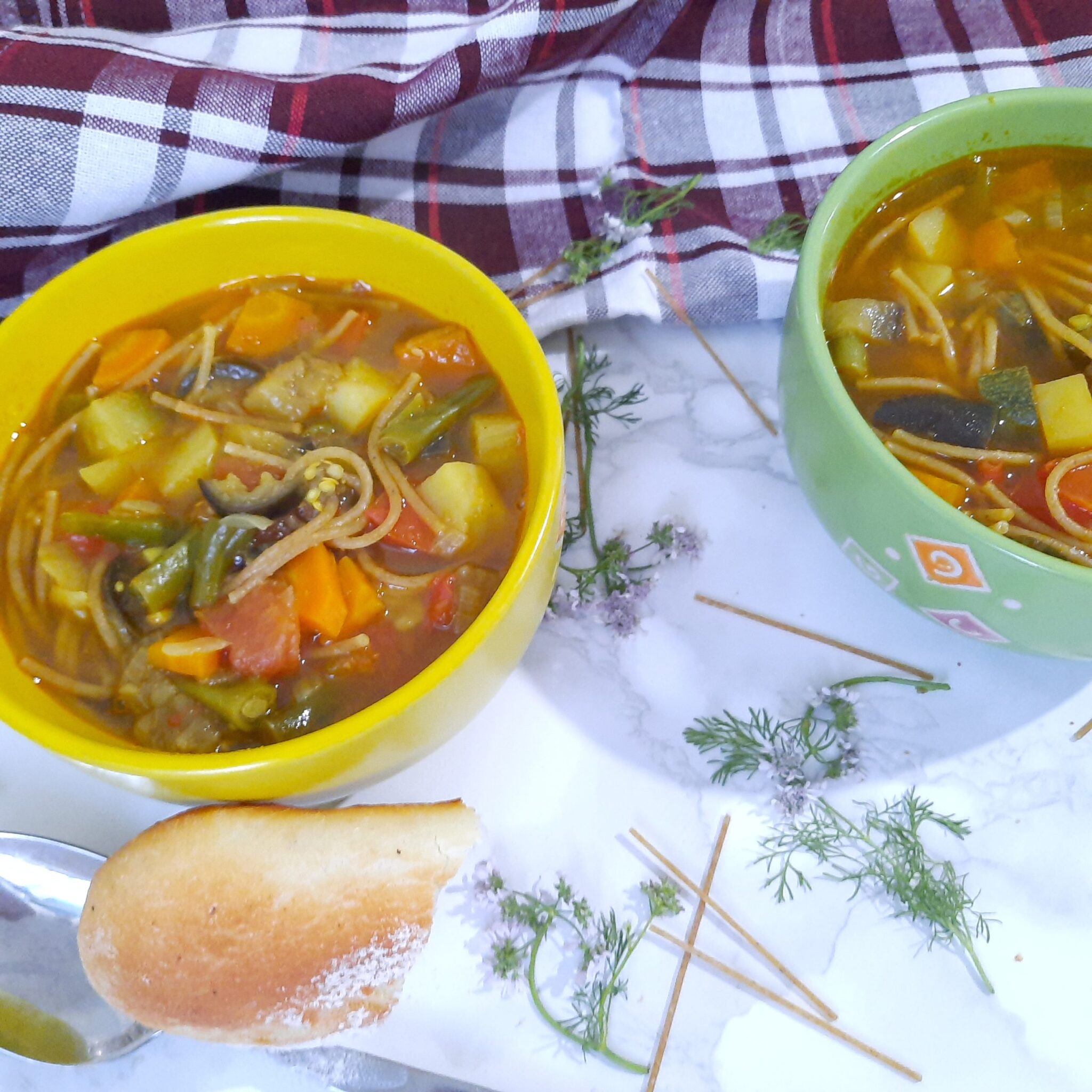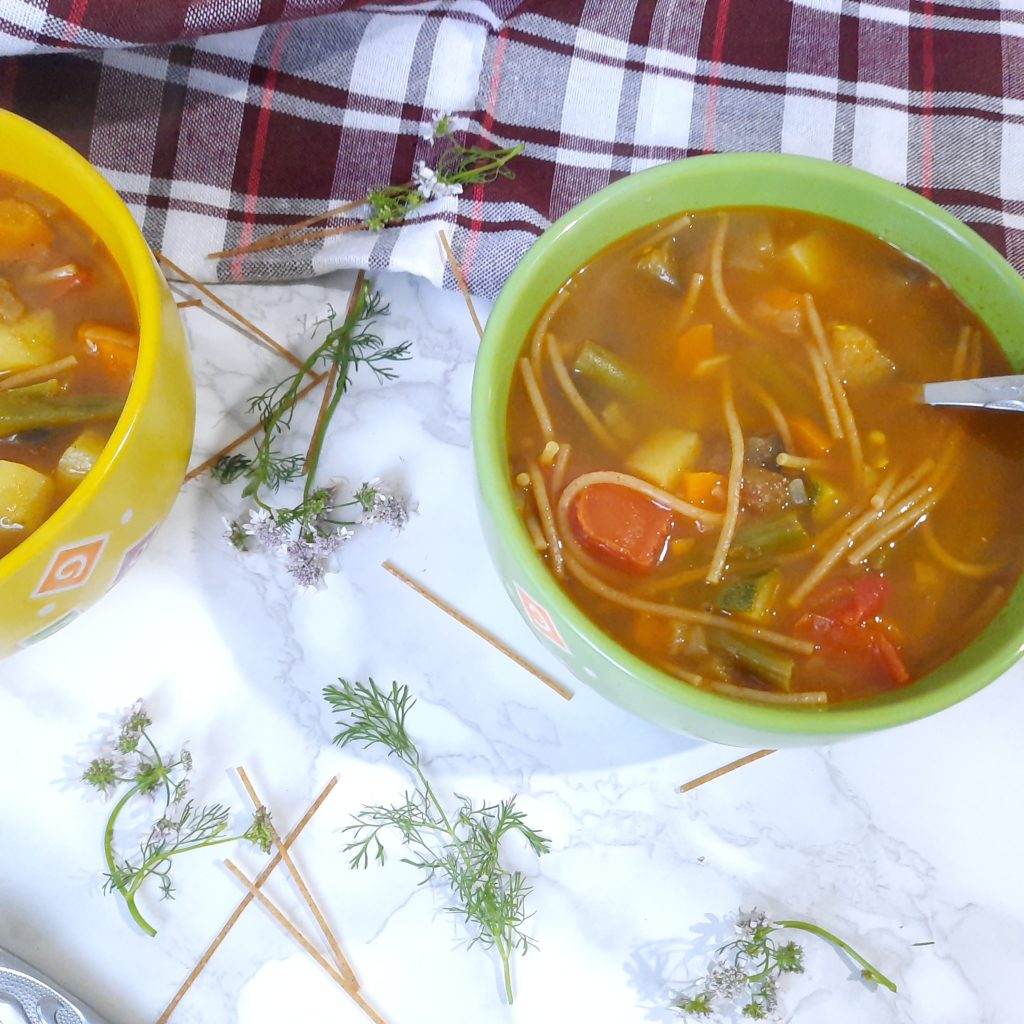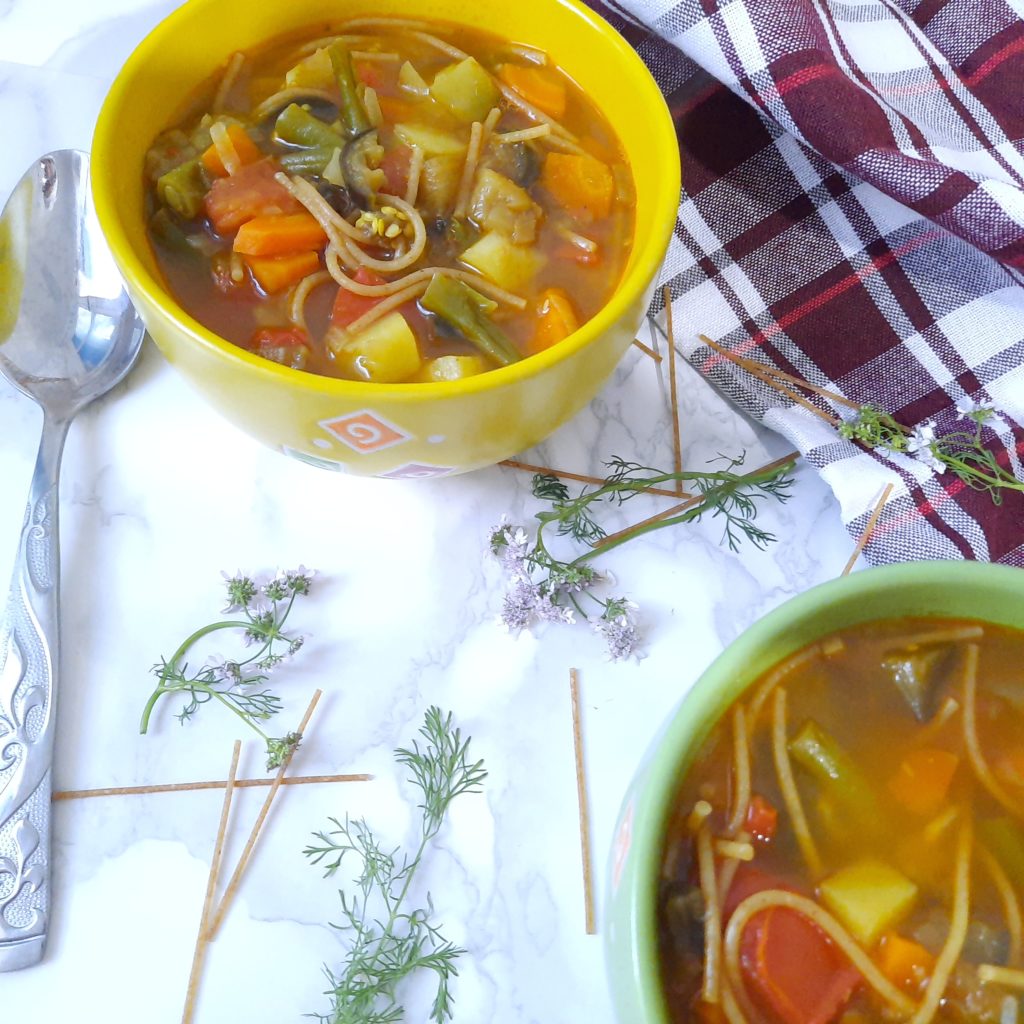Minestrone is a thick soup of Italian origin made with vegetables, often with the addition of pasta but it can be made vegan or gluten-free if desired. This classic minestrone soup recipe is healthy, easy to make, and tastes incredible.
Origin and history
The word minestrone, which means a thick vegetable soup, is attested in English from 1871. It is from Italian minestra, “soup”, or more literally “that which is served”.
In modern Italian, there are three words corresponding to the English word soup: zuppa, which is used in the sense of tomato soup or fish soup; minestra, which is used in the sense of a larger soup, such as a vegetable soup, and also for “dry” soups, namely pasta dishes; and minestrone, which means a very important or soup or a great stew, although the meaning has come to associate with this particular dish.
Minestrone originated from the Latin tribes of Rome, long before it became the Roman Empire when the local diet was “vegetarian by necessity” and consisted mostly of vegetables
A Roman soup dating back to 30 AD is mentioned in Marcus Apicius‘s ancient cookbook “De Re Coquinaria“. It describes polus a soup made of farro, chickpeas, and fava beans, with onions, garlic, lard, and greens thrown in.
As eating habits and ingredients changed in Italy, so did minestrone and more ingredients were added over time: tomatoes, potatoes, … and it is believed that this soup was simply made with whatever vegetables were present at the time and even in many cases using leftovers.
Because of its unique origins and the absence of a fixed recipe, minestrone varies widely across Italy depending on traditional cooking times, ingredients, and season. Minestrone ranges from a thick and dense texture with very boiled-down vegetables, to a more brothy soup with large quantities of diced and lightly cooked vegetables; it may also include meats.
Notes and tips
For a successful and traditional recipe, here are some tips:
- There is no fixed recipe, once you have acquired the basic recipe, you can play with the ingredients in order to create a personalized and unique dish. You can add any other vegetables such as sweet potatoes, pumpkins, cauliflowers, broccoli, peppers, cabbages…;
- You can also add herbs like parsley, chives, rosemary, oregano, or basil, or spices: a drop of curry can offer a tasty variation while hot chili peppers make it hotter;
- The vegetables must all be cut in the same way so as to allow homogeneous cooking;
- Frozen vegetables, as well as mixes, should be avoided, even if they seem practical, frozen foods actually hide several pitfalls and using frozen ingredients can ruin the flavor of the dish;
- Even if you are tempted, don’t add nuts to the minestrone: the vegetables themselves give flavor and no additional elements are needed to impart flavor to the soup;
- In the traditional recipe, borlotti beans are added to the soup but avoid using canned ones. Canned legumes risk compromising the flavor of the dish;
- It is always essential to choose seasonal vegetables in order to get the most out of your soup: in winter, zucchini and peppers are certainly not appropriate just as cabbage is not appropriate in summer.
- If you have one, cook your minestrone in a terracotta pot: this type of pot has the power to spread the heat evenly and makes the minestrone fragrant and tasty.
- We choose to add spaghetti cut into small pieces to our recipe, which makes the soup more filling and is a good hearty meal. You can also add short pasta, such ditalini rigati.
- Finally, the dish can be served with crusty toasted bread sprinkled with parmesan placed on the bottom of the plate and then covered with this soup and a drizzle of olive oil.

Minestrone soup
Ingredients
- 1 onion, medium
- 4 cloves garlic
- 2 carrots
- 1 celery rib
- 1 zucchini
- 1 potato, medium
- 1 eggplant
- ½ cup green beans
- 2 tomatoes,
- 2 tbsp tomato paste
- ¼ cup whole grain Spaghetti
- 4 cups vegetable broth
- 1-2 cups water
- 2 tbsp olive oil
- 1 tsp salt
- ¼ tsp black pepper
- 1 strand thyme,
- 1 strand marjoram
- 3-4 fresh basil leaves or coriander, for garnishing (optional)
- Freshly grated Parmesan, for garnishing (optional)
Instructions
- Wash the vegetables (onion, garlic, celery, carrots, zucchini, potato, eggplant, tomatoes), then cut them into dice of the same size;
- In a heavy saucepan, add olive oil over medium heat.
- Add the onion, garlic, carrots, and celery. Cook for 2-3 minutes.
- Add all the other vegetables except for the tomatoes and cook for another 2-3 minutes.
- Add diced tomatoes, tomato paste and 4 cups of lukewarm vegetable broth and bring to a boil.
- Cook for 15 minutes. If the soup is too thick you can add 1-2 cups of water.
- Tie the sprigs of thyme and marjoram with a string to create an aromatic bunch Add the spaghetti, salt, black pepper, and the bunch of thyme and marjoram.Cook for 8-10 minutes and turn the heat down.
- Once the soup is ready leave it to cool for a good half hour, sprinkle with a pinch of Parmesan, fresh basil or coriander, and olive oil.







